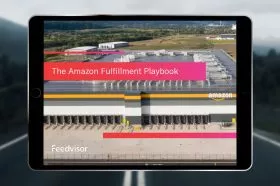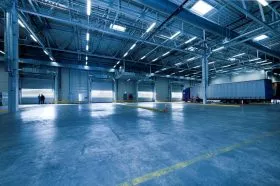Resources - Blog
Amazon Seller Fulfilled Prime: 2020 Requirements to Know

Stay on top of the latest e-commerce and marketplace trends.
Amazon Prime’s greatest attribute is its promise of fast and free shipping. Indeed, 83% of consumers cite free two-day shipping as the most compelling benefit of their Prime membership.
However, less than 16% of all Seller Fulfilled Prime (SFP) orders have been meeting Prime’s two-day delivery guarantee, according to Amazon, mainly because many sellers do not operate on weekends. This is about to change.
Starting Feb. 1, SFP sellers in the U.S. will be required to support Saturday pick-up and delivery, and make Prime-eligible products available for delivery nationwide. Amazon is implementing these updates to ensure that all products touting the Prime badge actually meet the one- and two-day delivery promises, providing Prime members with a consistent, positive shopping experience.
What is Seller Fulfilled Prime?
The SFP fulfillment program was introduced in 2016 as an opportunity for sellers to leverage the Prime badge without participating in Amazon’s Fulfilled by Amazon (FBA) program and paying the associated FBA fees.
The method allows qualified Amazon sellers with Professional seller accounts to display the Prime badge on orders fulfilled via their own warehouse — rather than Amazon’s FBA warehouse — or third-party logistics (3PL) providers.
Presently, SFP members can offer Prime-eligible products only to customers in specific regions where they are confident they can meet the Prime promise of rapid delivery. To support these changes, Amazon is launching a new dashboard that will allow sellers to track their one- and two-day delivery performance, and they will be required to meet Amazon’s target delivery speed metrics — or otherwise lose the ability to tout the Prime badge on their products.
Implications for SFP Sellers
While Amazon first made this announcement in August — with the intention of providing sellers ample time to determine how these changes will affect their business and make adjustments to their fulfillment strategy ahead of the deadline — time is now running out before the update takes effect.
With nearly three-quarters of current SFP orders failing to meet the delivery requirement, Amazon’s changes to the program will have vast implications for the majority of SFP sellers. Below are several steps you can take to understand the impact on your business and make adjustments to your fulfillment strategy accordingly.
1. Review your SFP performance metrics in Amazon’s new dashboard.
This is a crucial first step to fully understanding the update’s implications to your business, which will then allow you to understand what adjustments to your fulfillment strategy must be made. Keep in mind the ongoing requirements for SFP:
- Offer Premium Shipping options
- Ship over 99% of your orders on time
- Have an order cancellation rate of less than 0.5%
- Use Amazon Buy Shipping Services for at least 99% of orders
- Deliver orders with Amazon’s supported Seller Fulfilled Prime carriers
- Adhere to the Amazon Returns Policy
- Allow for all customer service inquiries to be dealt with by Amazon
2. Expand your current distribution network.
Previously, SFP sellers could regionalize their participation in two-day delivery, ensuring the Prime delivery promise for only some parts of the country. With these new requirements, that will no longer be allowed.
Can your current fulfillment network or 3PL provider accommodate Saturday pickups and deliveries? Are there changes you can make to ensure your existing operation can meet the new shipping deadlines? Whether you are operating your distribution network on your own or are leveraging a 3PL provider, consider ways you can expand your network to ensure two-day delivery nationwide.
3. Consider leveraging FBA or FBM.
If expanding your current network nationwide or partnering with a new 3PL provider is not a viable option, consider leveraging Amazon’s other fulfillment options: FBA or FBM. Both have their advantages and disadvantages, so it is up to you to decide which makes the most sense for your business and goals.
While FBA fees may have deterred you from leveraging the program in the past, perhaps now it is time to weigh the program’s advantages. With FBA, you no longer have to operate your own warehouse and distribution network. Rather, you would ship your merchandise to an Amazon fulfillment center, where items are stored in warehouses until they are sold. When an order is placed, Amazon employees physically prepare, package, and ship the products.
Most important, the FBA program allows you to continue touting the Prime badge, which can greatly improve your visibility and conversion rates. Create a cost analysis to compare the FBA fees you would incur compared with the increased cost of shipping to meet the new SFP requirements to understand which makes the most financial sense for your business.
With FBM, on the other hand, you would have to forego the Prime badge and lose out on the added credibility it provides to your brand and products. Instead of paying a service fee and shipping inventory to Amazon to handle, you can continue to use your own resources and send items directly to your customers on your terms and schedule. By choosing FBM, you can take complete control of the entire process, from purchasing, to shipping and receiving.
Petitions
Amazon sellers have started creating petitions in protest of the retailer’s recent SFP changes. The petitions urge Amazon to nix its Saturday pick-up and delivery requirement. Sellers have expressed that Saturday deliveries infringe on Jewish beliefs, as Sabbath is the day of rest, and forces them to operate during the weekend, subsequently increasing their monetary investment. If Amazon does not reverse its changes, sellers who cannot meet the new expectations will lose the Prime badge.
Final Thoughts
Amazon customers had experienced long delivery delays during the height of the pandemic. The company is increasing its fulfillment capacity by 50% in 2020 to keep up with rising demand and ensure every Prime order is delivered within the two-day guarantee period. As we head into the new year, keep in mind the sustained demand for e-commerce and plan your fulfillment strategy adjustments accordingly to ensure your business can keep up.
To understand which fulfillment method makes the most sense for your business, get in touch with Feedvisor here.
Learn what Feedvisor can do for your business.
When you partner with Feedvisor, you automatically receive access to our true, AI-driven technology and hands-on team of e-commerce experts. Contact one of our team members today to learn more about our end-to-end solution for brands and large sellers on Amazon, Walmart, and e-marketplaces.




